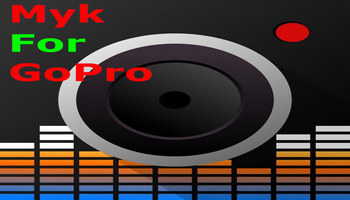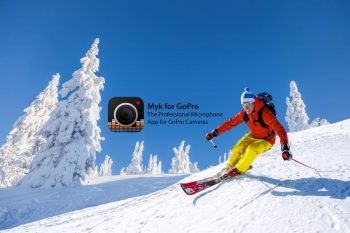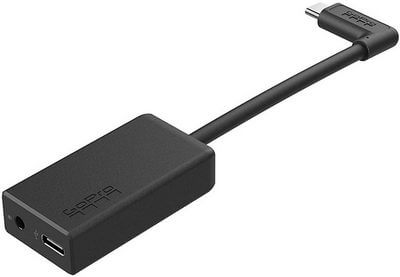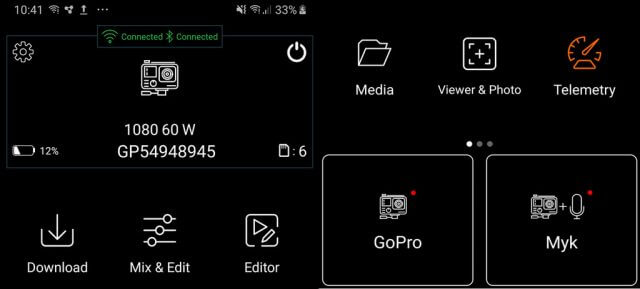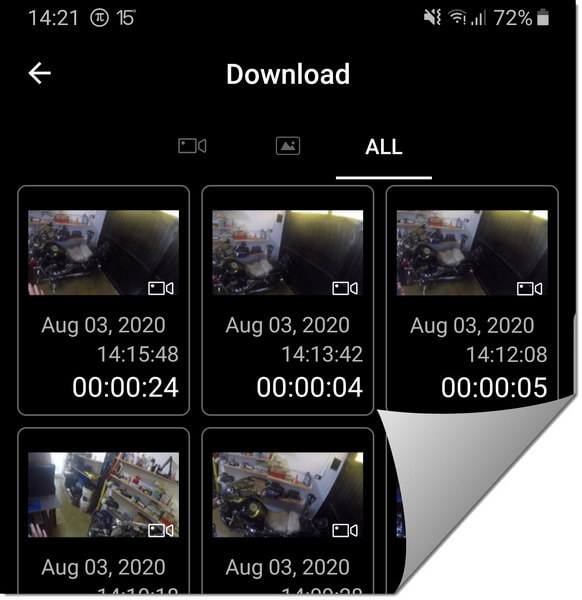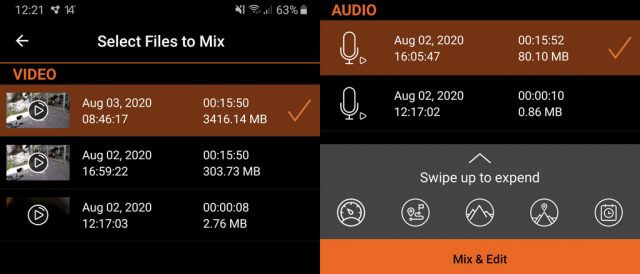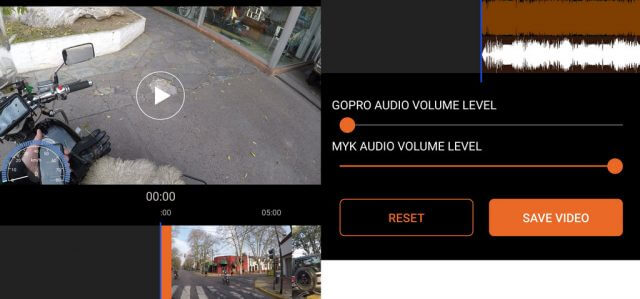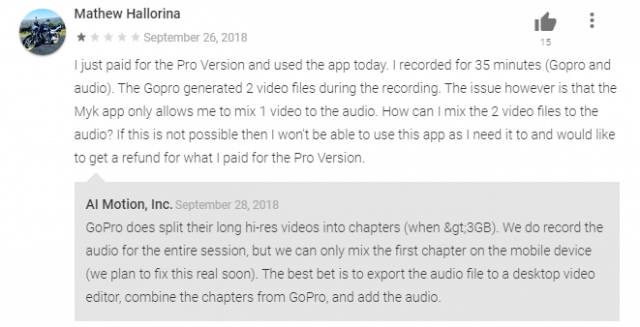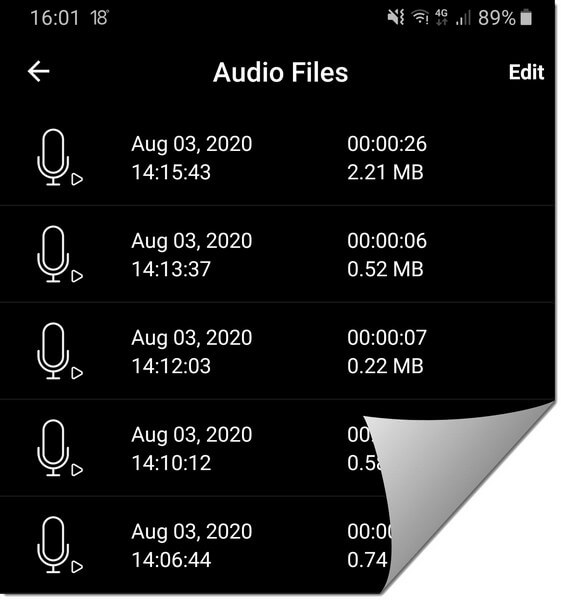Myk For GoPro – Background
As I’ve mentioned in previous articles, I use a GoPro Hero 5 to film my motorcycle journeys and whilst this action camera is the undisputed king in its field, it has one serious drawback, namely, recording your voice when it’s mounted in different scenarios– for example on your motorcycle helmet. This is and always has been a bone of contention for GoPro users for many years since the built-in microphones on the GoPros are good but not stellar. GoPro themselves haven’t exactly made the issue any easier and from the Hero 5 upwards you’re obliged to fork out $50 for their proprietary and cumbersome USB-C mic adaptor which has received so many negative reviews on Amazon and other outlets that I’m surprised people actually buy it. But there’s the sucker punch– it’s the only way to record external quality audio and GoPro has it all sewn up. Just check out the comments in this GoPro forum thread.
However, the other day I came across a Myk For GoPro app which on the face of it appears to solve the audio issue with one or two important caveats. But first, let’s take a look at how it works.
The most important function of the app is to record audio from your external microphone and mix it with the video recorded with the GoPro, for which you’ll need the following:
- GoPro action camera
- Mobile phone with audio/microphone jack
- External microphone (possibly a Bluetooth mic paired with your phone)
Clearly, I have a GoPro and the Note 8 has an audio jack, but I wasn’t sure if I had an external microphone. I then considered buying a lapel type mic before realising that the phone’s accessories included an AKG earphones kit with a built-in microphone that I’ve never used, so there’s a win right there! Once I’d downloaded the app, I hit connect and the phone connected to the GoPro over WiFi and Bluetooth because surprisingly, the app has full access to the functions of the GoPro. I say surprisingly because GoPro seems to go out of its way to stay proprietary, but perhaps that’s more on a hardware level.
In order to achieve quality sound, the microphone needs to be inside the helmet so I simply taped the AKG mic to the Bluetooth communicator mic stalk and went for a ride to test it all out.
Myk For GoPro In Action
Since the app can control the GoPro with voice commands, such as “GoPro start recording“, I began the trial and assumed the camera was actually recording. I say assume because I don’t have a HUD on my visor and the only way of knowing is by removing my helmet and checking in the camera viewfinder, or looking in the bike mirrors that the red LED was lit. Anyway, when the ride was over I began the interesting exercise of discovering exactly what audio and video had been recorded and how to marry them up. After all, that is the principal aim of using the app in the first place.
Once I’d finished recording, I hit download on the app which then gave me the option of downloading the videos to the phone so that the audio could be mixed with the video. The free version is very restricted, only allowing a low quality 854 x 480 version of my 1080 60fps videos to be downloaded, which clearly wasn’t acceptable, so I bought a one-month subscription for $4.99 which removed all the restrictions.
Mixing Audio And Video
I have to assume that the Bluetooth pairing is only used for communication between Myk and GoPro and the WiFi connection for downloading from the Gopro to the phone because it’s much faster than Bluetooth. That said, the 15 minute 1080p video weighing in at 2.5GB took about fifteen minutes to transfer from the camera to the phone. That done, it was time to marry the audio with the video which is where the major caveat comes in– rendering HD video on a portable device.
The app quite correctly mated the audio and video tracks, but the mixing took around 45 minutes with the phone getting very hot to the touch. Having said that, the end result was better than I expected with the audio perfectly synced and clear as a bell.
Prior to mixing I was able to adjust the volume levels of the both the GoPro and Myk which is an important detail because, although the mic is inside my helmet, the GoPro does pick up some of my voice resulting in it being duplicated and turning that volume slider down to zero overcame that issue.
It’s also worth mentioning that the GoPro microphones can’t be turned off or controlled in any way, so any sound that it picks up has to be edited out later. This is important if your voice appears twice with an echo effect.
Alternative Methods Of Editing
As an experiment, I put the same Myk edited video through Movie Studio on my PC and rendered it as close as possible to the Myk settings, i.e., 1080p at 60fps at a bitrate of around 20,000 and after eight minutes the rendering was complete. I then had a further look around the app and found that the audio and video files are saved in a media folder, so it’s not rocket science to identify which audio track belongs to which video thus allowing me to mix the video on my PC.
It’s also worth pointing out that GoPro splits longer HD videos into chapters, so mixing will have to be done on a PC because it’s not possible until Myk comes up with a fix, as you can see from their response to a question on Google Play.
Bluetooth With Multiple Devices
This is where using multiple Bluetooth devices starts to get tricky because, as far as I know, Bluetooth devices can only pair with one other device at any given moment. In fact, many devices now support a feature called dual audio, so I was completely wrong about that. I raise this issue because when I’m riding, I have three devices running:
- Galaxy Note 8
- Vnetphone Communicator
- GoPro Hero 5
When I was browsing the extensive Myk settings menu, I noticed that I could select Bluetooth headset as the audio source, but since the phone needs to be paired with the GoPro for the Myk app to work correctly, I became curious, so I ran a test recording without the AKG microphone cable connected to the phone and my voice was recorded normally through the Vnetphone mic.
That not so small detail really did get me curious because the communicator always needs to be on and paired with my phone when riding so that I can take incoming calls. So how can it be that my voice was picked up by the Myk app when the communicator wasn’t paired with the phone? I’m not entirely sure, but one further experiment with Bluetooth dual-audio turned on proved that I could record video and voice and take an incoming call through the communicator headset. It’s also clear that the AKG wired microphone is far superior to the Bluetooth mic, so I’ll probably leave that attached.
Conclusion
Myk For GoPro is one of those programs that bridge a gap. In this case, one created by GoPro themselves– the need for external microphone support without the bulky hardware. In fact, it’s not even possible to pair a Bluetooth mic directly with a GoPro because the company is said to have hobbled the Bluetooth software to that effect, which reminds of when I owned an iPhone 3G many years ago and experienced similar Bluetooth connectivity problems. GoPro is foisting an expensive and unwieldy adaptor on us that also needs the waterproof housing to be compromised in a far from ideal solution if you can call it that. Clearly, Myk has seen the problem and reacted.
The app is very well designed with a full suite of features and ultimately achieves the goal of being able to use an external mic with a GoPro which, let’s face it, isn’t exactly putting men on Mars. I would certainly recommend Myk if you own a GoPro and if my month’s subscription is successful, I’ll more than likely go for the lifetime license.
Myk For GoPro can be downloaded from:
The author is not affiliated in any way with either Myk or GoPro.
Further Reading: GoPro Hero – The Very Best In Action Cams
—
